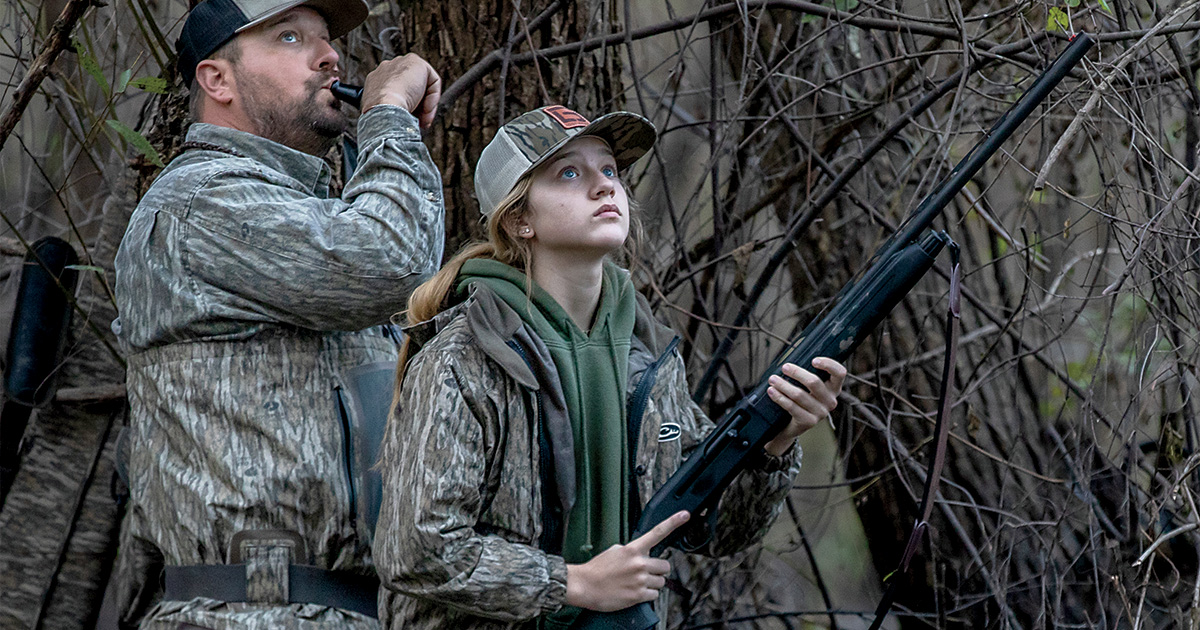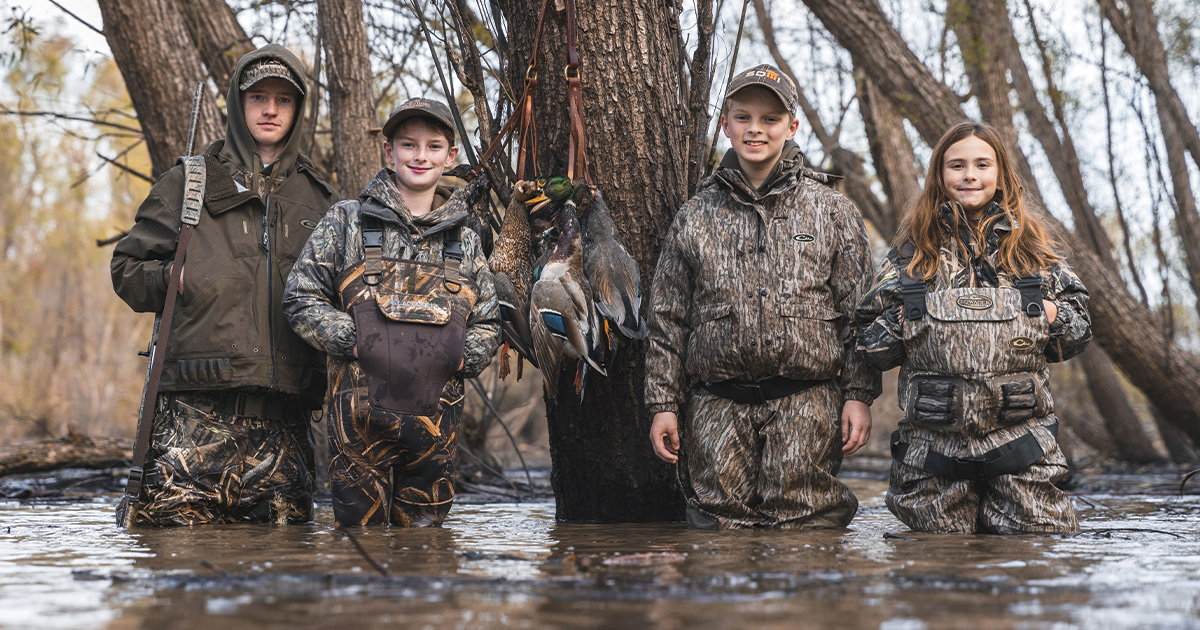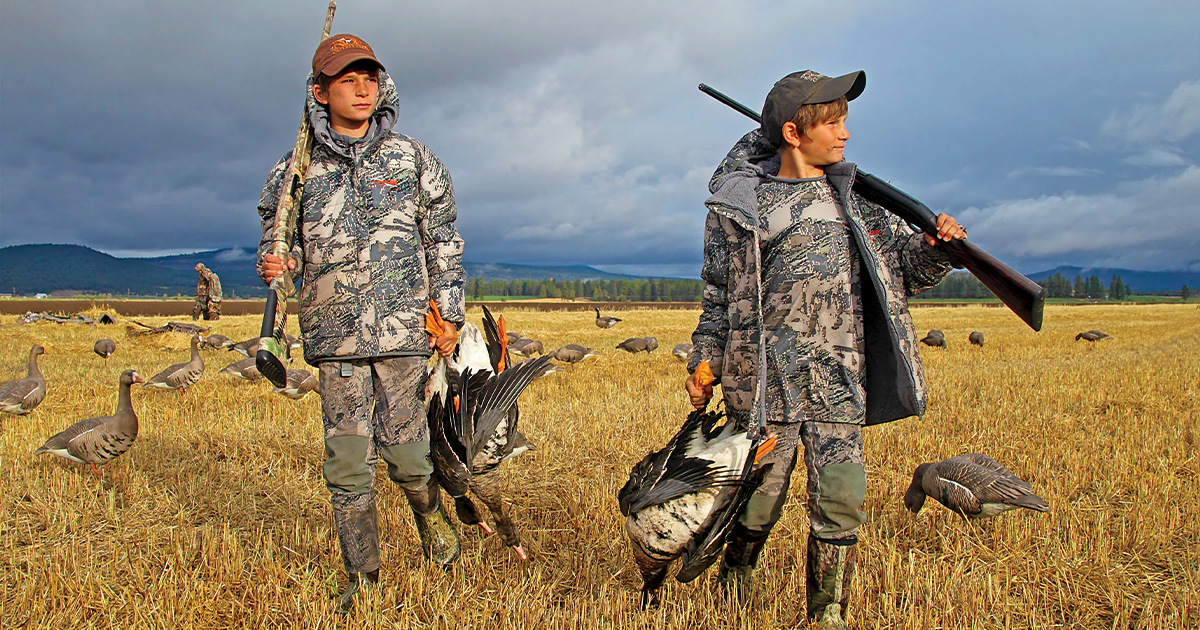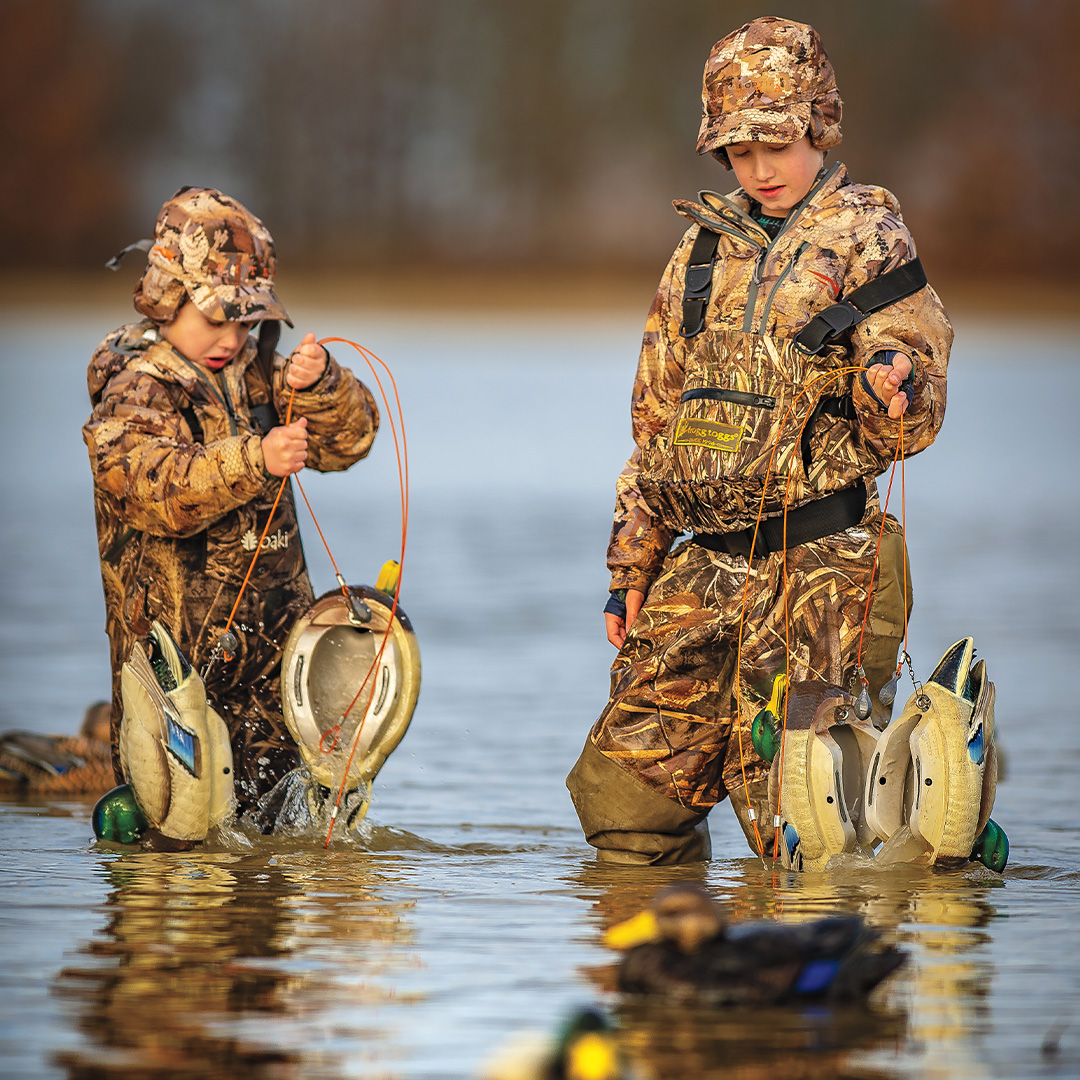Youth Movement
Special hunts for kids can help kick-start a love of waterfowling
Special hunts for kids can help kick-start a love of waterfowling


The moments leading up to a morning waterfowl hunt are an absolute feast for the senses. The sights, sounds, and smells of a marsh coming to life elicit an excitement that inspires a passion for waterfowl and the places they call home.
Tendrils of steam from coffee or hot chocolate rise from cups filled from a worn thermos pulled from a blind bag. If you’re close enough to the quivering Labrador retriever peering anxiously into the dark that still covers the marsh or flooded timber, you’ll likely smell his wet fur. From outside the blind, quacks, splashes, and other sounds announce the presence of creatures wearing fins, fur, or feathers. Your fellow hunters whisper stories of past hunts and make predictions about the morning’s fortunes, while the sounds of whistling wings and chatty hen mallards greet the glow of light rising in the east.
The excitement of the morning continues to build until the real show begins, when the unmistakable clang of a shotgun action closing rings through the blind and announces the arrival of legal shooting time, the first notes of a greeting call are blown through a trusty single-reed, and an excited voice says, “Take ’em!” After the shots ring out, you pause to draw in the scent of the spent shotshell that delivered the first bird of the morning.
A first experience in the blind is sometimes all it takes to provide a spark that ignites a young hunter’s love for waterfowling. For many kids, this happens while participating in a special youth-only hunting event. Following is a look at what to expect on a youth hunt, what the hunts mean to the future of our waterfowl hunting heritage, and why you should consider participating in one if given the chance.
Organized hunts for young waterfowlers take place across the country in all four flyways. These hunts are often organized by state wildlife agencies and their partners, including local DU chapters, and typically begin with activities that help prepare young hunters for their first days in the field or marsh.
There is a lot that goes on during a waterfowl hunt, and the experience can be intimidating to young hunters, explains Brian Schaffer, outdoor education project administrator with the North Dakota Game and Fish Department. For that reason, youth are given a chance to encounter the different aspects of a hunt in a relaxed setting before the decoys are set, guns are loaded, and shots are fired.
“The activities beforehand include everything the hunters are likely to experience on the day of the hunt—handling and shooting a shotgun, learning about the laws in place to protect the resource, packing a blind bag, and blowing a duck or goose call,” Schaffer says. “The goal is to make sure that the young hunters have at least a basic understanding of things beforehand, so they don’t feel overwhelmed.”

Getting started in waterfowl hunting can be overwhelming. Special youth-only hunts offer a welcoming environment where kids can participate, learn, have fun, and make new friends.
For the actual hunt, youngsters are divided into small groups and assigned to adult mentors who help guide hunting activities throughout the morning. Afterward, the participants learn how to clean and prepare birds that were taken during the hunt.
“The focus is on providing a safe and educational setting so that the young hunters leave feeling like they have learned something and that they have had fun,” Schaffer explains.
Youth waterfowl hunting events are typically built around a special one- or two-day youth-only season. In northern states, these seasons typically occur before the regular season begins, when the weather is friendly and before locally produced ducks and geese have migrated south. In other states, youth seasons may occur either before the regular season begins or after it ends, or at some point in between.
According to Trey Reid with the Arkansas Game and Fish Commission, the timing of the hunt is important. “Here in Arkansas, we have divided our youth hunting days so that we have one in early December, during the regular season split, and another after the season ends. This way there’s a good chance that on one, or hopefully both, of those days we’ll enjoy conditions that are conducive to a migration event or to otherwise having good bird numbers in the state,” Reid says. “Having the youth hunts at a time when the regular season is closed gives the birds the ability to settle back into areas that they may have left because of hunting pressure and other activities. We hope this will create the kinds of opportunities for youth hunters that will allow them to have a great experience and want to do it again.”
Managing hunting pressure is extremely important when youth hunts take place on public ground. In Arkansas, this includes the state’s famous flooded green timber and moist-soil areas. In California, state officials work closely with their federal partners to provide special youth-only hunting opportunities on the state’s refuge system, including the Sacramento National Wildlife Refuge, which is known for producing world-class duck and goose hunting. Each year, thousands of young hunters descend on California’s public land on designated youth hunting days for a chance at American wigeon, green-winged teal, pintails, white-fronted geese, and more.

The next generation of waterfowl hunters will become the next generation of conservationists and DU supporters.
“Competition on public land can be very intense, so giving youth a chance to experience a day in the marsh without the same level of competition we see on a regular day of the season is really important for their enjoyment of the hunt,” says Taylor Williams, hunter and angler recruitment, retention, and reactivation manager for the California Department of Fish and Wildlife. “We want the hunters to learn something, participate in the hunt, and then want to come back and do it again, year after year. This is especially true for those hunters who are 16 to 17 years old, who will soon be making their own decisions about whether they want to hunt.”
Also playing a vital role, Williams says, are those adults who serve as mentors during these youth-only waterfowl hunting events. A mentor may be a family member of one of the youth hunters, or it could be someone who simply has a desire to answer questions, demonstrate waterfowl hunting or dog training techniques, or help foster a love of waterfowl and waterfowl habitat for the next generation.
“It is always great to see all of these adults out on the refuge trying to get that next generation of waterfowl hunters kick-started,” Williams says. “It is not an easy job, but they are committed to these kids and to the future of waterfowl hunting.”
On most youth hunts, an emphasis is placed on three main topics: safety, education, and fun. “As mentors, we want young hunters to be involved in the hunt by helping set up the decoys, and we want to keep them engaged by explaining what we’re doing and why we’re doing it that way. But what we really want is for the kids to have fun,” says Tony Vandemore, waterfowl guide and co-owner of Habitat Flats in north-central Missouri. “Even if they shoot a box of shells and don’t touch a feather, who cares? Did they have fun? That’s the most important question.”
Last fall, Vandemore hosted a dozen young hunters at Habitat Flats as part of a DU Greenwing youth hunting event. While at duck camp, the young hunters shot clay pigeons, listened to a game warden’s presentation on waterfowl regulations, took part in a dog-training seminar, and worked on duck identification.

“We spent quite a bit of time before the hunt and while we were in the blind talking about gun safety, which is really the most important part of any hunt,” Vandemore says. “All of us can use reminders on how to safely handle a gun, making sure not to click the safety off until you stand up to shoot, and being mindful of shooting zones and how we swing our barrels, but it is especially important to establish those safety rules for young hunters.”
The DU Greenwings managed to bag a few birds while they were at Habitat Flats, but Vandemore says the success of this event—and all youth hunts—goes well beyond the number of ducks on the strap at the end of the day.
“By the end of the weekend, we had these kids from all over the country sitting around the campfire, telling stories, and out in the yard playing catch with the football,” Vandemore says. “Waterfowl hunting is a universal language, and it has a way of connecting people. To see these young hunters building that connection and then hear them say, ‘Man, I can’t wait to do this again,’ that’s when you know that you’ve made an impact, and that you’ve done something to help keep the waterfowl hunting heritage alive.”
The future of waterfowl hunting truly does rest in the hands of today’s young hunters, who will someday be carrying on the traditions shared with them by mentors, family, and friends. “As a dad and as a mentor to other young hunters, there is just something special about seeing that fire ignite in a young person,” says Nebraska hunter and photographer Doug Steinke. “That fire will eventually provide the inspiration for the next generation of hunters to lead the way for the preservation of our waterfowl hunting heritage and lead the fight for the conservation of waterfowl habitats. It all starts with that single spark, and it is pretty special to be able to be a part of the experience that provides that spark.”
Even if you’ve already found that spark for waterfowl hunting, a youth hunt can still be a great way to learn something new and meet new friends, and it is also the perfect opportunity to pay it forward by inviting someone along who has yet to experience a morning in the blind. That is the best way to do your part to see that waterfowl will fill the skies today, tomorrow, and forever.
Ducks Unlimited uses cookies to enhance your browsing experience, optimize site functionality, analyze traffic, and deliver personalized advertising through third parties. By continuing to use this site, you agree to our use of cookies. View Privacy Policy